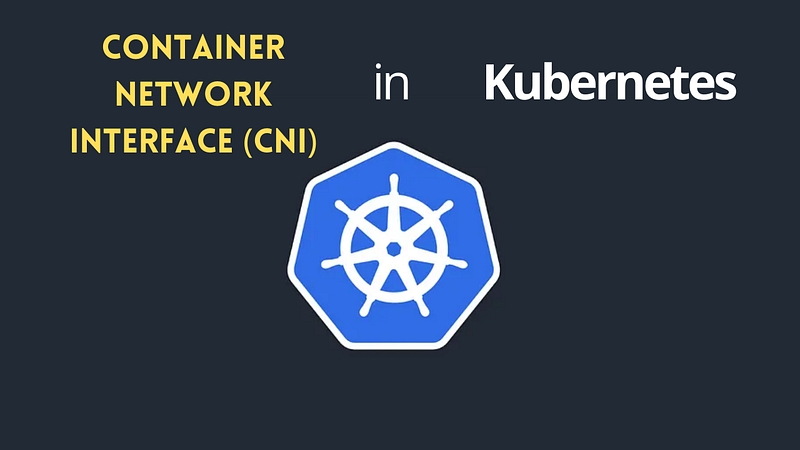Understanding Kubernetes: Part 21 -CNI

If you’ve been following our Kubernetes series 2025, welcome back! For new readers, check out Part 20: Understanding Kubernetes: Network Policy
Container Network Interface (CNI) in Kubernetes
A Container Network Interface (CNI) is a standard used in Kubernetes to configure networking for containers. It provides a pluggable architecture that allows different networking solutions to be integrated seamlessly with Kubernetes. CNI is responsible for assigning IP addresses to Pods, establishing routes, and enforcing network policies across the cluster.
Kubernetes itself does not include a default networking solution; instead, it relies on CNI plugins such as Calico, Flannel, Weave, and Cilium to implement networking functionalities.
Example Use Case:
Suppose you have a Kubernetes cluster that requires advanced network policies, IP address management, and high-performance data path routing. By deploying a CNI solution like Calico, you can achieve efficient network segmentation, security enforcement, and observability within the cluster.
Capabilities of CNI:
Pod Networking:
Assigns unique IP addresses to each Pod and ensures connectivity across nodes.
2. Network Policies Enforcement:
Supports policies to allow or restrict traffic between Pods.
3. IP Address Management (IPAM):
Handles IP allocation and deallocation dynamically within the cluster.
4. Encapsulation & Routing:
Implements networking overlays (VXLAN, IP-in-IP) or direct routing for better performance.
5. Scalability:
Handles large-scale deployments efficiently by optimizing network traffic.
6. Custom Network Configurations:
Allows customization to meet specific infrastructure needs like multi-network support and bandwidth management.
Popular CNI Plugins:
Calico:
Provides network security, policy enforcement, and BGP-based routing.
Supports both overlay and non-overlay modes for optimal performance.
2. Flannel:
Simple and lightweight CNI that creates an overlay network using VXLAN or host-gw.
Suitable for small to medium-scale deployments.
3. Weave:
Implements a full mesh overlay network with built-in encryption and multi-cloud support.
4. Cilium:
Built on eBPF technology, providing high-performance networking and deep observability.
5. Kube-Router:
Provides network routing, firewalling, and service proxy functionalities in a single component.
YAML Example — Installing Flannel CNI:
apiVersion: apps/v1
kind: DaemonSet
metadata:
name: flannel-daemonset
namespace: kube-system
spec:
selector:
matchLabels:
app: flannel
template:
metadata:
labels:
app: flannel
spec:
hostNetwork: true
containers:
- name: kube-flannel
image: quay.io/coreos/flannel:v0.18.0
args:
- "--ip-masq"
- "--kube-subnet-mgr"
securityContext:
privileged: trueExplanation:
This DaemonSet deploys Flannel CNI across all nodes in the cluster.
It runs in the
kube-systemnamespace with the necessary privileges to manage node networking.The
--kube-subnet-mgrflag allows Flannel to dynamically allocate IPs.
In My Previous Role:
As a Senior DevOps Engineer, I managed Kubernetes networking by leveraging CNI plugins to optimize network performance and security. Some of my key contributions included:
Implemented Calico CNI to enable fine-grained network policies, ensuring strict access controls between sensitive workloads.
Tuned Flannel CNI for low-latency communication across multi-node clusters, achieving 30% performance improvement.
Automated CNI deployments using Helm and Terraform to ensure consistency across multiple environments.
Troubleshoot networking issues related to Pod connectivity, latency, and DNS resolution using tools like kubectl, Calicoctl, and tcpdump.
Collaborated with cloud providers to integrate CNI plugins with VPC networking for hybrid cloud deployments.
🚀 Ready to Master Kubernetes?
Take your Kubernetes journey to the next level with the Master Kubernetes: Zero to Hero course! 🌟 Whether you’re a beginner or aiming to sharpen your skills, this hands-on course covers:
✅ Kubernetes Basics — Grasp essential concepts like nodes, pods, and services. ✅ Advanced Scaling — Learn HPA, VPA, and resource optimization. ✅ Monitoring Tools — Master Prometheus, Grafana, and AlertManager. ✅ Real-World Scenarios — Build production-ready Kubernetes setups.
🎓 What You’ll Achieve
💡 Confidently deploy and manage Kubernetes clusters. 🛡️ Secure applications with ConfigMaps and Secrets. 📈 Optimize and monitor resources for peak performance.
🔥 Start Learning Now: [Join the Master Kubernetes Course](https://cloudops0.gumroad.com/l/k8s)
Don’t miss your chance to become a Kubernetes expert! 💻✨
🚀 Stay ahead in DevOps and SRE! 🔔 Subscribe now and never miss a beat on Kubernetes and more. 🌟
Last updated